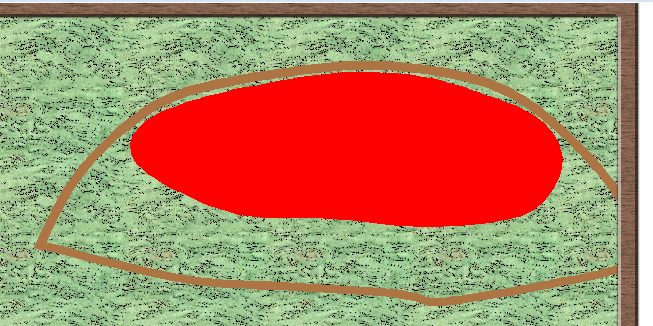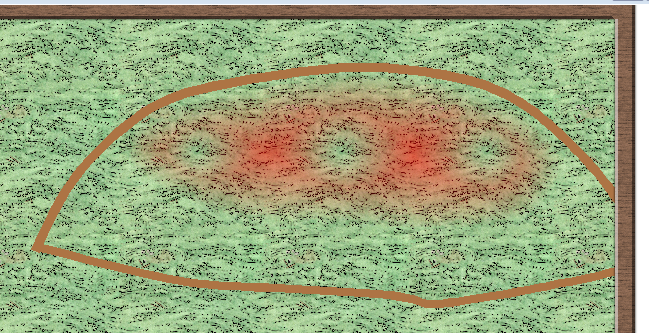Transparency Acne - Lesson Learned
 KertDawg
Administrator, ProFantasy 🖼️ 4 images Surveyor
KertDawg
Administrator, ProFantasy 🖼️ 4 images Surveyor
Hello. Let me share a lesson that I just learned. I had a problem with transparency acne, and it took me a while to solve. I had an inner fade effect on a sheet, above a bitmap background. The background was green grass, and the poly above it was black so as to suggest a dome-like shape. Of course, the top poly had acne. Nothing new here. So, I made a liner sheet in between that was a copy of the top sheet with the acne. I used an RGB Matrix effect to make the line sheet bright red. I thought this should have solved the problem, as I've *done this before.* At least I thought so...
Here is a shot of the liner and background sheets with no sheet effects:
There's a black poly with red RGB Matrix on top of a greed bitmap background. I have the actual top layer hidden for this discussion. When I turned on the inner fade, I got this:
Yikes! Why would a *red* layer cause acne on top of a *green* background? Any guesses?
Solution: The RGB Matrix effect did *not* help the acne. The acne was caused by the intrinsic color of the poly, not the computed color after the RGB Matrix effect. In other words, even though the poly looked red to me, the edge fade still took it to be black when it came to acne.
I changed the poly to be explicitly red, and I removed the RGB Matrix effect. Drumroll....
The lesson that I learned: Transparency Acne relates to the color of the top layer without any effects applied to it. Don't use an RGB Matrix effect to shortcut a change to the poly color.
I learned a lesson here. Maybe it was just "Dumb Cartographer Day," and I needed to drink more coffee. Either way, I hope this helps somebody someday!





Comments
This happens because the RGB Matrix effects is vulnerable to TA as well. It won't make gigantic holes, since it doesn't do any edge effects, but it still need to figure out what parts to color, so the same pixels that make giant holes with edge fade are left out by RGB Matrix, leaving the edge fade to produce the known and loved TA holes.
I see what you're saying. I have never seen any TA with RGB Matrix, though. Do you have any advice for how to see that?
Thank you!
Since RGB only colors, not modifies the edge, it is hard to see, as it will be small tiny pixels that are the color of the entity below. More or less impossible to see when zoomed out.